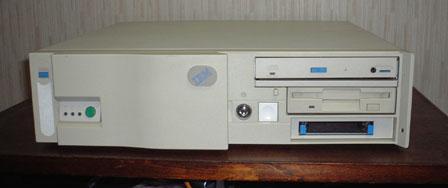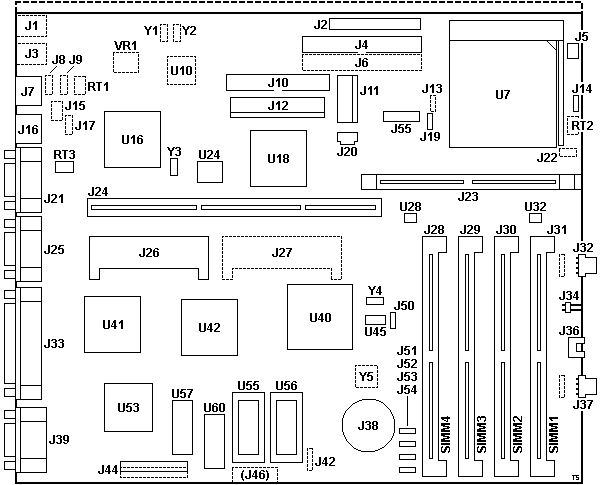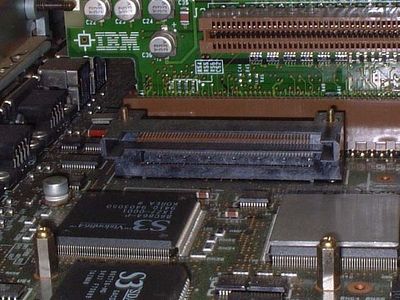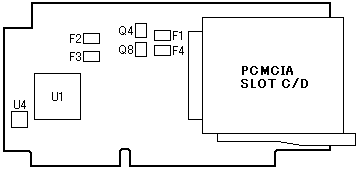|
720r101.exe PC720 Reference Diskette v1.01 (zipped image)
720d101.exe PC720 Diagnostic Diskette v1.01 [84G7602] (zipped image)
720u101.exe PC720 Utility Diskette v1.01 [84G7622] (zipped image)
720u110.zip PC720 Utility Diskette v1.10
720s101.exe PC720 Support Diskette v1.01 [84G7604] (zipped image)
720s110.zip PC720 Support Diskette v1.10 [84G7604]
![Disk [P]](/other/img/photo.gif)
pc720sp.lzh Pentium ODP Flash Update for PC720 6860 v1.10 (zipped image)
![Disk [P]](/other/img/photo.gif)
6860ref.lzh Reference Diskette for Pentium ODP 6860 v1.10 (zipped image)
![Disk [P]](/other/img/photo.gif)
6860dig.lzh Diagnostic Diskette for Pentium ODP 6860 v1.11 (zipped image)
![Disk [P]](/other/img/photo.gif)
S3_868_1.zip S3 Vision864 Video Support Disk for Windows v2.41B2-J5
S3_868_2.zip S3 Vision864 Video Support Disk for OS/2
PCMCIA_111.zip PCMCIA Utility Diskette v1.11
TR_Driver.zip Small PCI Token Ring 16/4 Adapter, Device Driver Diskette [85G8236]
![Disk [P]](/other/img/photo.gif)
TR_Diag.zip Small PCI Token Ring 16/4 Adapter, Diagnostic Diskette [85G8237]
![Disk [P]](/other/img/photo.gif)
TR_NDIS.zip Small PCI Token Ring 16/4 Adapter, LAN Support NDIS Diskette [85G8238]
![Disk [P]](/other/img/photo.gif)
IDE_CDROM_111.zip IBM IDE 2x CD-ROM Option Device Driver v1.11
Note: All above disks are in Japanese. There likely
never was an English version.
PC720 PCI/Micro Channel Product Page (6860-J4x/J0x/JZG)
PC720 PCI/ISA Product Page (6869-J4x)
PC720/750 PCI/Micro Channel Product Page (6860-J4G/J0x/JZG, 6886-J04)
PC330/720/750 PCI/ISA Product Page (6873, 6863, 6883-JFx/JAP/JTN, 6887-JSx/J8x)
Official Japanese product pages (archived).
US5765008 Personal computer with riser card PCI and micro channel interface (Google Patents)
1995 IBM PC Series 720: Unboxing (coobird's lab, YouTube)
1995 IBM PC Series 720: Looking inside (coobird's lab, YouTube)
Power Supply
Content created by Tatsuo Sunagawa and Tomáš Slavotínek.
Introduction
PC720 6860 was introduced to the market together with PC750 6886 in 1995.
IBM Japan didn't introduce the Pentium-based PC730 6876
in Japan, instead they made this unique space-saving 486 desktop model.

The machine has one standard 3.5" bay for a floppy drive, one slimline
CD-ROM drive bay and an opening for two PCMCIA slots.

The PC720 is a hybrid system with one MCA slot and one shared MCA/PCI
expansion slot (right side). A special ISA-like slot (middle top) is provided
for a PCMCIA /A adapter exclusively designed for the machine. Another special
opening (bottom middle) is used for network interface.
The JZG model uses a different riser with two MCA connectors and no standard
PCI slots. Instead there is a special MCA slot on the other side of the riser
intended for a slightly modified Display Adapter/NI-J (middle opening - see
HERE).
Models
| Model |
PC720 6860 |
| J4G |
J00 |
J04 |
J08 |
JZG |
| CPU |
iDX4-100 |
i486DX2-66 |
| L2 Cache |
128KB |
None (socket omitted on some) |
| RAM (std/max) |
8MB (Max 128MB, 32MB x4) |
4MB (128) |
| VRAM |
2MB |
1MB (Upgradable to 2MB) |
| FDD |
3-Mode (1.44MB/1.2MB/720KB) x1 |
| HDD |
728MB |
540MB |
| Video |
S3 Vision864 |
PS/55 D/A NI |
| Option Slot |
PCI or MCA x1, MCA x1 |
MCA x2 |
| Small PCI NIC |
– |
– |
Token Ring |
Ethernet |
– |
| PC Card Slot |
Type I/II x2 or Type III x1 (ISA style PCMCIA /A) |
| Dimension (mm) |
360 (W) x 370 (D) x 89 (H), 9 kg |
| Pre-installed OS |
PC DOS J6.3/V, Windows J3.1 |
DOS J5.02Z |
Type JZG was equipped with a PS/55 Display
Adapter/NI-J and DOS J5.02Z (JDOS).
Model 6869 is an ISA version of PC720.
Model 6863 (also ISA) is named as "PC720" but it's a Pentium machine with P-100.
6863 uses same planar with PC750 model 6883 (probably sold only in Japan, planar is
different from that of 6885/6886 or 6887).
6860/6869 Planar
DX2 w/ or w/o L2 slot: FRU P/N 85G8297, P/N 85G8263
![Front [P]](/other/img/photo.gif)
![Back [P]](/other/img/photo.gif) | |
![Front (alt) [P]](/other/img/photo.gif)
DX4 w/ L2 slot: FRU P/N 85G7310, P/N 85G7235

J1 Pads for Line-in jack
J2 IR/PCMCIA connector
J3 Pads for Line-out jack
J4 40-pin IDE1 connector
J5 Power switch header
J6 Pads for 40-pin IDE2 connector
J7 Keyboard port
J8 Pads for CD-ROM audio header
J9 Pads for AUX audio header
J10 34-pin floppy connector
J11 PSU connector P11 (3.3 V)
J12 PSU connector P1/P2 (AT)
J13 Pads for 3-pin jumper (?)
J14 CPU Select (SX/DX)
J15 Pads for headphone/mic header
J16 Mouse port
J17 Pads for mute button header
J19 Unknown (default 1-2)
J20 PSU connector P9 (SB, PS ON)
J21 DE9 Serial port A
J22 Pads for CPU fan header
J23 L2 Cache Socket (or pads only)
J24 Riser slot
J25 DE9 Serial port B
J26 Small PCI slot #1
J27 Pads for Small PCI slot #2
J28-31 72-pin SIMM socket
J32 Speaker connector
J33 Parallel port
J34 Volume pot connector
J36 Suspend/Resume connector
J37 Power & HDD LED connector
J38 CR2032 battery holder (RTC+CMOS)
|
J39 HDD15 video connector
J42 Pads for 4-pin header (?)
J44 VESA connector
J46 EEPROM prog. pads (solder side)
J50 Frequency select (66/50 MHz)
J51 Mouse Enable/Disable
J52 FDD write Enable/Disable
J53 Clear CMOS (1-2: normal, 2-3: clear)
J54 Password overwrite jumper
J55 CPU voltage select
RT1,2 Pads for PTC fuse (?)
RT3 PTC fuse (?)
U7 ZIF Socket 3
U10 Pads for Crystal CS4231 Mwave codec
U16 PC87323VULB Super I/O
U18 OKI M33S0570-013 06H3669 IDE buffer?
U24 Flash BIOS 85G7319
U28 NM93C46 1kbit Serial EEPROM
U32 LM386 Audio op-amp (PC Speaker)
U40 06H6956 TI F642522PGC (heatsink)
U41 S3 86C864P-4 Vision864
U42 06H6119 TI CF64569BPPM (heatsink)
U45 AvaSem AV9154-04CS16 Freq. generator
U53 S3 86C716-MG SDAC
U55,56 DRAM sockets (video)
U57,60 KM416C256BJ-6 256Kx16 DRAM (video)
VR1 Pads for voltage reg. (audio)
Y1 Pads for 16.9344 MHz xtal (U10 audio)
Y2 Pads for 24.576 MHz xtal (U10 audio)
Y3 32.768 kHz osc (U16 RTC)
Y4 14.318? MHz xtal 59G3482 (U45)
Y5 Pads for osc (to U40)
|
U16 PC87323VULB
Super I/O - integrates FDC, K/B controller, RTC+CMOS, 2x UART, 1x IEEE 1284
parallel port, IDE interface.
U40 06H6956 TI F642522PGC (heatsink) -
CPU-PCI bridge, memory controller
U42 06H6119 TI CF64569BPPM (heatsink) -
PCI-ISA bridge
J2 is labeled "IR/PCMCIA". It's obvious
that PCMCIA is meant for a 2nd PCMCIA device which could be installed at the
front end. I've believed for a long time that IBM only planned to develop such
a device but never made it. That was until I got my 6869-J4K (ISA DX4-100 model
which is not listed in my PC Guide Book). J4K has additional PCMCIA slot just
below the FDD bay which you can see in the picture at the top of this page. And
what does "IR" mean? It's likely for some sort of IrDA device. No clue if it
was ever released.
J14 CPU type select; 1-2: 486SX, 2-3:
486DX (default).
J46 EEPROM prog. pads (solder side)
pin 1 - CS, pin 2 - SK, pin 3 - DI, pin 4 - DO, pin 5 - GND, pin 6 - N/C?
J50 Frequency select (sourced from U45);
1-2: 50 MHz, 2-3: 66 MHz.
J51-54 Default setting for these jumpers
are all 1-2 closed.
J55 CPU voltage select
For 5 V CPU put the 2x3 jumper block close to the PSU connector.
For 3.3 V CPU put the 2x3 jumper block close to the CPU socket.
There are two different sizes of the board with some minor layout changes
near the longer edges. Different boards have different reworks. All boards have
an unpopulated CS4231-based audio
section.
CPU
Planar can take a DX2-66, DX4-100 or PODP5V83. No interposer required to use
3.3 V CPU's. In order to use PODP, BIOS should be updated to KOJT66JP. See
below.
PODP
The PODP Support Diskettes Kit consists of 3 parts:
Note: Win95 support program,
win95serv0.exe
(dead), is not for 6860 but for 6863/6869 and other ISA models. 32-bit PCMCIA
driver contained in this archived file is not usable on 6860. It's for
6863/6869 (and it may be for Win95A).
Memory
The planar has 4 SIMM slots and takes 4, 8, 16, or 32 MB, 70 ns, FP, parity
modules.
L2 Cache
Uses the same style 128-pin L2 cache modules
as the Lacuna and
9585 K/N.
The original module is P/N
85G4865, marked as
"128KB L2 Super Cache". This module can be used for M70/80 PowerBoard.
Some of the DX2-66 machines don't have the L2 cache socket.
Video
S3 Vision864 1 MB (2 MB for J4G model). Win95 recognize the chip with it's
built-in driver.
JZG model doesn't use onboard S3 Vision but use a
PS/55 Display Adapter/NI-J together with
pre-installed DOS J5.02/Z (specialized DOS J5.02 for this model).
Small PCI

I've never seen this type of connector in any other PC. IBM Japan made only
2 adapters for this interface:
- SFF PCI Ethernet card, C/R 85G4854, equipped in 6860-J08
![Front [P]](/other/img/photo.gif)
- SFF PCI TokenRing card, C/R?, equipped in 6860-J04. I want to see it!
Note: I don't know if it's a world-wide standard
or not, but according to my friend, this connector was introduced as "kogata
PCI" in IBM's leaflet issued when the PC720 was announced. In Japanese,
"kogata" stands for "small" rather than "micro", though these two words are
nearly the same.
Hard Drive Interface
Only one IDE channel is provided. There are solder pads for 2nd IDE channel
on the planar, but even if the 2nd channel could be activated, there is no room
for 3rd IDE drive.
The drive interface is EIDE and it can handle drives larger than 524 MB. I've
used a 2.4 GB drive, and a 6.4 GB Seagate drive with 15 heads. Both worked
well. I've also tried a 8 GB Seagate drive, but it wouldn't detect it.
Hard drive runs in MS-DOS Compatibility Mode Under Win95
Win95 will load "standard IDE/ESDI hard disk controller" with configuration
#1 which has IRQ value fixed to 15. Change the configuration to #0 which has
IRQ 14, all drives will work properly.
Riser Card
MCA/PCI Riser FRU P/N 85G7333, P/N 85G2105; FRU P/N 85G8245, P/N 85G8243
Used by all MCA models except for JZG. It has 1x PCI/MCA shared slot, 1x MCA
slot, and 1x ISA style slot for 2-slot PCMCIA/A.
MCA/PCI Riser Front
![Front [P]](/other/img/photo.gif) | |
![Front (alt) [P]](/other/img/photo.gif)

J3,4 32-bit MCA slot
J5 32-bit PCI slot
U6 06H5425 PCI-MCA bridge?
|
U8 10G7808 DMA Controller
Y1 24.0000 MHz osc
|
U6 06H5425 PCI-MCA bridge? Also used on
the PC 730/750 MCA riser and
PC Server 720 planar.
MCA/PCI Riser Back
![Back [P]](/other/img/photo.gif) | |
![Back (alt) [P]](/other/img/photo.gif)

J1 EEPROM write enable/disable
J6 ISA-style slot for PCMCIA /A
J7 Battery connector (NVRAM)
J8 Pads for 2-pin jumper
J9 PSU connector P10 (3.3 V)
|
U14 Dallas DS1210S NVRAM controller
U15 06H6468 OKI M91S028AT
U16 06H4542
U17 LH5168N-10L 8Kx8 SRAM (NVRAM)
|
J1 EEPROM write enable/disable; 1-2:
Disable, 2-3: Enable (default). When setting administrator password (PAP) move
the jumper to 2-3 (enable) and then set the password. Once finished, move the
jumper back to 1-2 to prohibit password overwriting. More info about PAP
HERE.
JZG MCA Riser
The riser for the JZG model lacks the PCI slot and instead has an additional
MCA slot (located under the ISA-like slot J6). This MCA slot is intended for a
slightly modified PS/55 Display Adapter that comes standard with the
machine.
J2 PS/55 DBCS D/A enable/disable; 1-2:
Use DBCS (default), 2-3: Disable DBCS; Disables the model-specific DBCS Display
Adapter/NI-J allowing the use of the onboard S3 Vision864.
Riser NVRAM Battery P/N 44G3778
3 V non-rechargeable battery - probably a regular CR2032 w/ contacts,
twisted leads and connector.
This battery backs up only the NVRAM subsystem located on the riser card.
The base CMOS/RTC is located on the planar in the I/O chip and is backed up by
a separate CR2032 battery.
Pinout
| |
Pin |
Description |
| |
1 (top) |
Batt. voltage (+3 V) |
| |
2 (bottom) |
Common ground |
Connector Type
Series: JST (Japan Solderless Terminals) ZH Connector - datasheet
Socket: B2B-ZR - Vertical, Wire-to-Board, 1.5 mm, 1 Rows, 2 Contacts, Through Hole Straight
Plug: ZHR-2 - Connector Housing, ZH, Receptacle, 2 Ways, 1.5 mm
Contact: SZH-002T-P0.5 - Contact, ZH, Socket, Crimp, 26 AWG, Tin Plated Contacts
2-Slot PCMCIA Adapter FRU P/N 85G7334, P/N 54G0547
![Front [P]](/other/img/photo.gif)

F1-4 PPTC fuse
U1 54G0574
|
U4 89G5535 PAL
Q4,8 transistor?
|
2-slot PCMCIA /A with ISA style connector is equipped in all models. ISA
models (6869 and 6883) also use same adapter.
Win95 built in driver can't handle this adapter properly on MCA models but
the very same adapter installed in ISA models can be used without any problem
under Win95B or Win98. I tested a driver for Win3.1 "PC Card Director" on my
6860-J4G and I found it could handle modem card. I've been using a 28.8Kb
Double Jack Modem Card under Win95B. PCMCIA device is not seen under Device
Manager, but the card securely detected in PC Card Director. I don't know if
other cards such as NICs or SCSI PCMCIA can be used.
CD-ROM
An optional slim-line CD-ROM drive can be installed in the top drive bay.
The genuine IBM 2x speed CD-ROM is P/N 85G7285 (see the picture at the top of
this page). The drive has a non-standard size - 132.5 mm (W) x 27.5 mm (H).
Service Partition
6860 is not an IML machine, but it does support service partition (reference
partition?). My 6860 takes long time till the "Set Configuration" page comes on
the screen when I boot the system with the Reference Diskette. It stays quiet
while it reads configuration files as if the system froze. But from service
partition stored on the hard drive it goes straight into configuration
menu.
|